Harbin, the capital of Heilongjiang Province, is world-renowned as China’s “Ice City.” Famous for its Russian heritage, grand winter festivals, and unique Northeast culture, the city offers an experience like no other. Whether you’re marveling at towering ice castles, strolling historic streets lined with Baroque architecture, or savoring hearty northeastern cuisine, Harbin welcomes every traveler. From the dazzling Ice and Snow World to the bustling Central Street, Harbin delivers an unforgettable blend of history, culture, and frosty wonder.
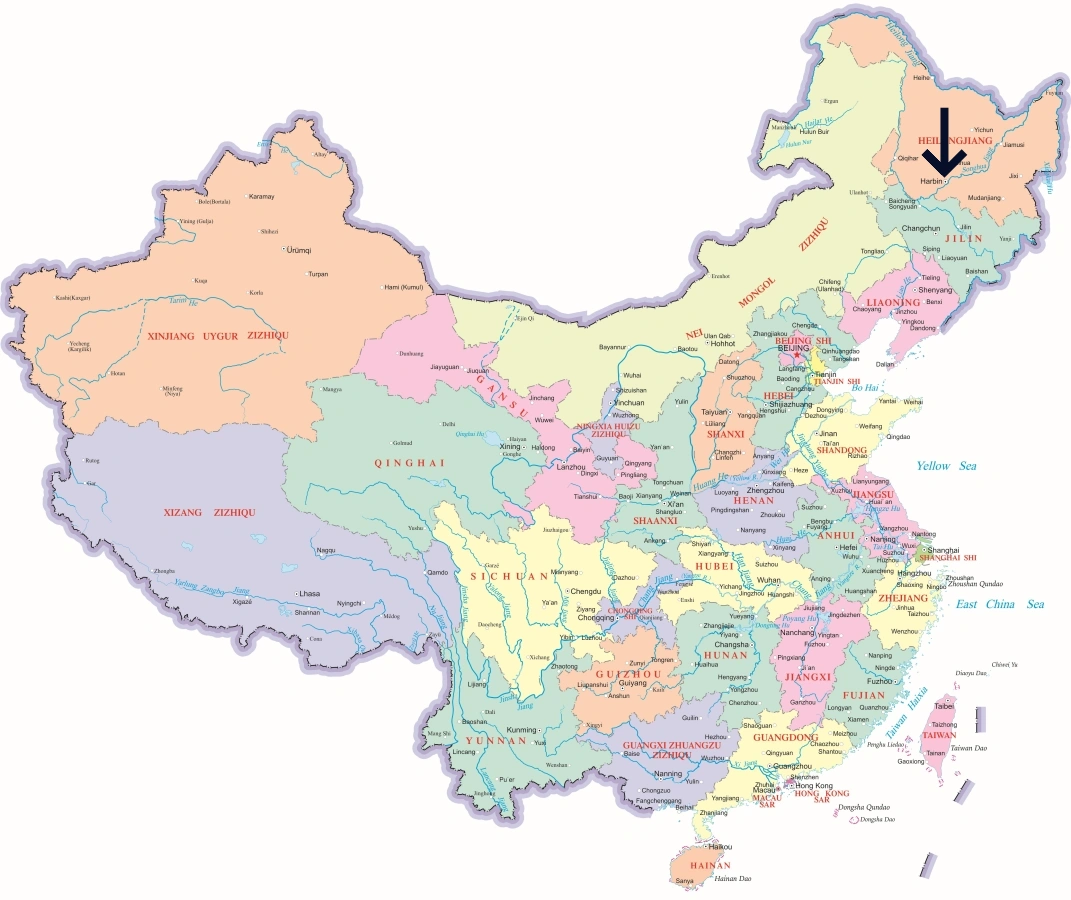
Harbin’s highlights span from dazzling seasonal festivals to architectural treasures. Stroll down Central Street (Zhongyang Dajie) to admire Russian-style facades, visit the majestic Saint Sophia Cathedral, and experience the magical Harbin Ice and Snow World with its towering frozen sculptures. In winter, don’t miss the Sun Island International Snow Sculpture Art Expo. For animal lovers, the Siberian Tiger Park offers a rare glimpse of these powerful cats. Beyond the city, the snow-covered slopes of Yabuli Ski Resort make it China’s top destination for skiing and snowboarding.
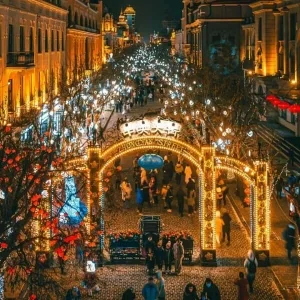
Central Street in Harbin is a bustling pedestrian avenue lined with European-style buildings, shops, and restaurants. It’s famous for architecture, local snacks, and a vibrant atmosphere year-round.
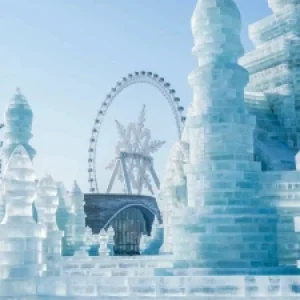
Harbin Ice and Snow World is a spectacular winter theme park featuring massive ice castles, sculptures, and light displays. Visitors enjoy skiing, ice slides, and dazzling nighttime illuminations.
Harbin’s cuisine reflects its Russian influence and hearty northeastern traditions. Must-try dishes include Guo Bao Rou (Sweet and Sour Pork), crispy and tangy; Sha Zhu Cai (Pig Slaughtering Feast), a warming winter stew; and Di San Xian (Three Fresh Vegetables), a homestyle favorite. For something refreshing, try Da La Pi (Cold Potato Starch Noodles), or snack on Su Huang Cai (Crispy Pickled Cabbage). Don’t miss Da Lie Ba Bread, a Russian-style round loaf perfect with butter. Street stalls along Central Street offer candied hawthorns and steaming dumplings that keep you warm in the icy air.
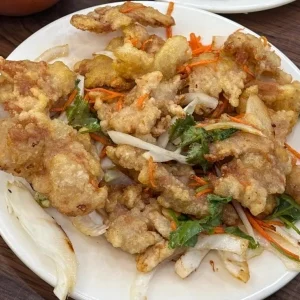
A famous Harbin dish of crispy fried pork slices coated in a sweet and sour sauce. It combines crunchy texture with tangy flavor, representing classic Northeast Chinese cuisine.
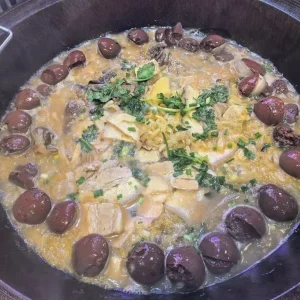
A traditional hearty dish from Northeast China, featuring pork, blood sausage, sauerkraut, and vermicelli. It is often enjoyed in winter, symbolizing warmth and family gatherings.
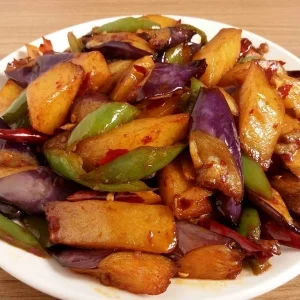
A beloved vegetarian dish made with stir-fried potatoes, eggplant, and green peppers. Rich in flavor and aroma, it showcases Northeast China’s homestyle cooking tradition.
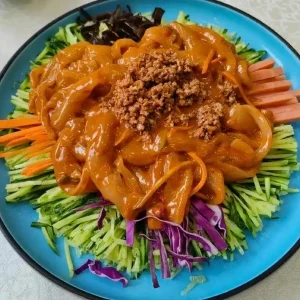
A refreshing dish with wide potato starch noodles, vegetables, garlic, and sesame paste dressing. Popular in summer, it offers a chewy texture and savory-sour taste.
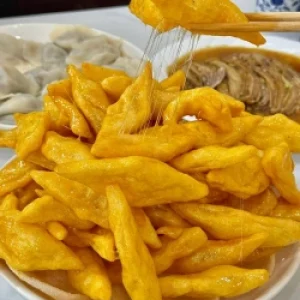
A unique Harbin appetizer made with fermented napa cabbage, fried until golden and crispy. It balances sourness and crunch, making it a distinctive local delicacy.
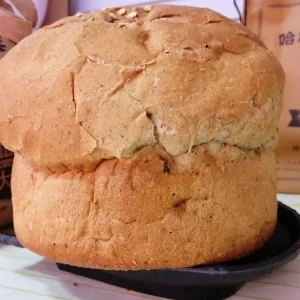
A Russian-influenced Harbin specialty: large round rye bread with a chewy crust and soft inside. It reflects Harbin’s Russian heritage and is perfect with butter or jam.
Harbin is well connected with a growing metro system (currently 4 lines), extensive bus routes, and plentiful taxis. Harbin Taiping International Airport (HRB) links the city with major domestic and international destinations. High-speed trains connect Harbin to Beijing in under 5 hours and Shenyang in 2 hours. During winter, dress warmly for outdoor walks between attractions. Ride-hailing apps like Didi and shared bikes help fill in short distances, though cycling is limited during icy months.
Luxury travelers can find five-star hotels along Central Street and near Sophia Cathedral, such as Sofitel Harbin or Shangri-La Hotel Harbin, offering comfort and stunning river views. Budget travelers enjoy hostels and boutique hotels hidden in historic alleyways downtown. For ski lovers, staying near Yabuli Ski Resort is ideal for early-morning runs on the slopes, while those seeking family fun may prefer hotels near Sun Island for quick access to snow sculptures and amusement parks.
With attractions, food, and transport all mapped out, design a trip that balances snowy adventures with cozy cultural stops. Marvel at glittering ice castles, sip Russian-style kvass along Central Street, and warm up with hot dumplings after a ski session. Stroll through Sophia Cathedral Square, admire lantern-lit snow sculptures, and end the evening with Harbin beer at a lively pub. Every season has something unique to offer, but winter in Harbin is truly unforgettable.
The best time to visit Harbin is from December to February, when the world-famous ice and snow festivals take place, though May to September also offers pleasant summer weather. Winters are extremely cold, so travelers should prepare with thermal clothing, thick coats, gloves, and snow boots. Cashless payments such as Alipay and WeChat Pay are widely accepted, but it is wise to carry some small bills for street snacks. The Harbin International Ice and Snow Festival usually opens in early January, though installations are often ready by late December, making the holiday season particularly magical. Visitors should avoid peak travel times such as Chinese New Year and the October Golden Week, when attractions are crowded. Carrying an insulated flask for hot tea can make exploring in subzero temperatures much more enjoyable.
Harbin, the capital of Heilongjiang Province, is one of the largest cities in Northeast China. It covers about 53,100 sq km, with a permanent population of approximately 9.4 million.
Here’s a breakdown by district:
Note: Population numbers are based on the latest estimates and may vary slightly.
Harbin has a humid continental climate, characterized by long, cold, and dry winters, as well as short, warm, and humid summers. It is world-famous for its ice and snow.
Here’s what to expect month by month:
Best travel season: December to February (for ice and snow festivals), or May to September (for comfortable summer weather).
Here are the postal and telephone codes for major districts in Harbin:
Explore detailed travel guides for China’s most popular cities, covering attractions, local food, accommodations, and transportation tips.

 English (US)
English (US)